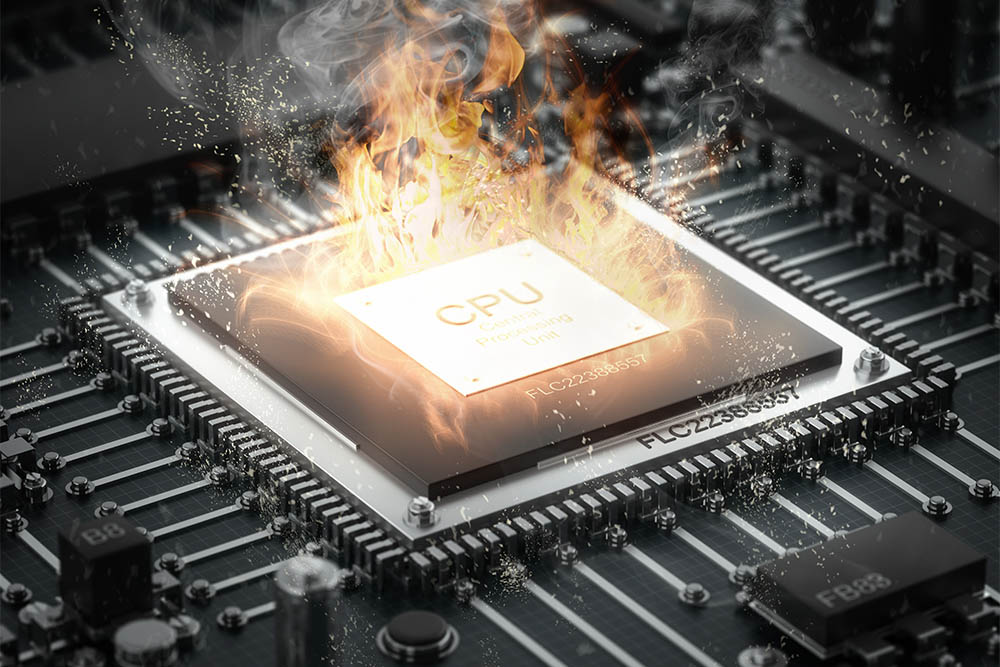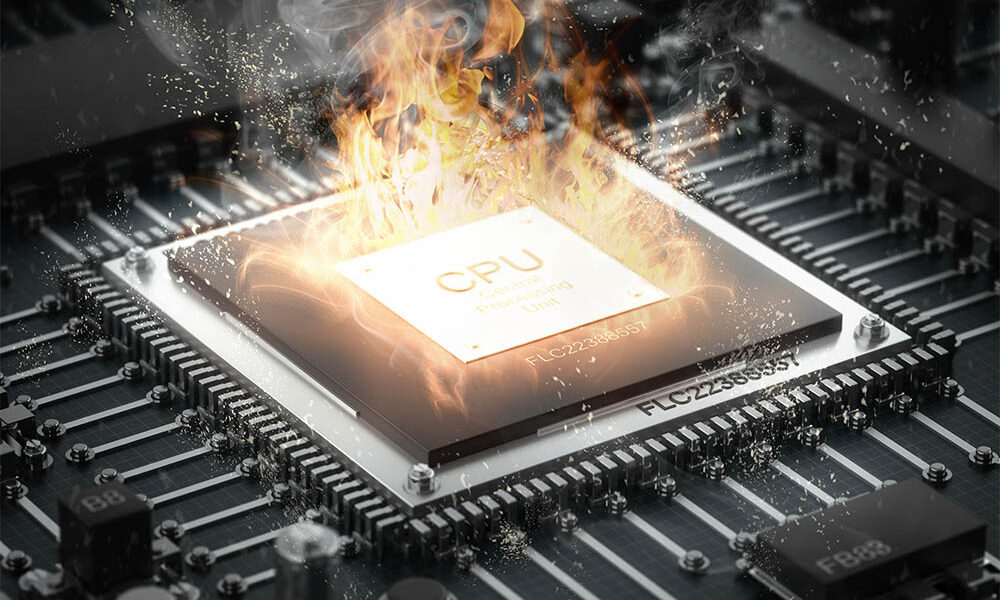There can be many reasons why your CPU might have sudden temperature spikes and dips. This will explain the reasons, and then share how you can fix it:
Causes for sudden temperature spikes and dips in CPU
- Fluctuating CPU Load: Modern CPUs are excellent in power management, and a temporary increase in the workload can cause the CPU temperature to ramp up and dip quickly.
- Aggressive Fan Curves: If your CPU Fan(s) are programmed to run as soon as the temperature spikes, the temperature can dip suddenly after the spike.
- Poorly Applied Thermal Paste: If the thermal paste between your CPU and the cooler is spread unevenly, overapplied, or under-applied, it can prevent heat dissipation.
- Hardware Issues: While reasonably uncommon, if the temperature spikes and dips are persistent, this can be a sign of a failing or old CPU struggling to keep up with demanding operating systems and apps.

Fix CPU temperature jumping up and down all of a sudden
If your CPU temperature increases and decreases randomly or suddenly on your Windows 11/10 computer, these suggestions will help you resolve the issue:
- Change Fan Step-Up Time
- Disable PBO in BIOS
- Use A Fan Control Application To Delay Fan Step Up
- Bar Fan Speed to 1200 RPM
- Close High CPU Usage Apps And Processes
Let’s dive in!
1] Change Fan Step-Up Time
The issue of temperature fluctuations often bottoms to your CPU fans being too eager to step up and control the temperature. You can set the Cabinet fan step up to delay a bit to prevent the issue of CPU temperature fluctuations:
- Enter your PC BIOS/UEFI by constantly tapping the F2 key on your PC boot.
- Head to the Hardware settings once in the BIOS/UEFI, then Fan Control.
- In Fan Control, you will see all the cooling fans on your PC.
- Open the controls for each fan, and now change the Fan Step-up time from 0.1 (default) to 0.3 or according to your preference.

- Exit the BIOS and boot into your PC.
Mind you, the BIOS/UEFI settings for each PC and motherboard manufacturer are different. For a more comprehensive guide on changing the fan step-up time for your specific motherboard, it is recommended that you read the motherboard user manual or look up the support forum.
2] Disable PBO in BIOS
AMD CPUs have a feature called the Precision Boost Overdrive or PBO. Under the right conditions, this feature raises the CPU speeds beyond the default overclock settings. Disabling the PBO can help stabilize the CPU temperatures:
- Access your PC’s BIOS/UEFI, go to Settings or Advanced Settings, and find AMD Overclock Settings.
- In the AMD overclock settings, find the Precision Boost Overdrive option, which can change the status from Advanced to Disabled.

- Exit the BIOS/UEFI and boot into your PC.
3] Use A Fan Control Application To Delay Fan Step Up

If you are not used to editing BIOS, you can use a Fan Control application provided by your GPU or an open-source application like FanControl. Fan Control allows you to change the Fan Speed or Step time, change Fan curves, restrict to certain RPM, and many other controls.
4] Bar Fan Speed to 1200 RPM

To eliminate the possibility that fan speed is behind the issue, you can bar the fan speed at a moderate level, like 1200 RPM. This will ensure the fans run at a constant speed and won’t cause frequent temperature spikes and dips. To bar fan speed, using universal software like MSI Afterburner is recommended.
5] Close High CPU Usage Apps and Processes

While it is evident if there is a process or app that is putting a substantial load on your PC without much of a reason, then closing it will fix the temperature spike issue in your CPU:
- Open Task Manager by pressing the Ctrl+Shift+Esc keyboard shortcut.
- Go to the Processes tab from the left pane and click on the CPU option to sort the CPU usage in descending order.
- Right-click the process you wish to end, then click on the End Task option from the context menu.
We hope you found the article helpful and that you were able to fix the CPU temperature jumping up and down issue.
Is 90C safe for the CPU?
Every CPU has its temperature limit, and while 90C is OK with most CPUs, a long and constant 90C might cause an issue. So, it’s best to set your fans to run at maximum speed so the temperature can be gradually cooled down.
What is the average CPU temperature while idle?
When nothing major is running in the foreground and background, the temperature stays around 60C to 70C, sometimes even lower. You can use temperature sensor software to keep an eye on it.


